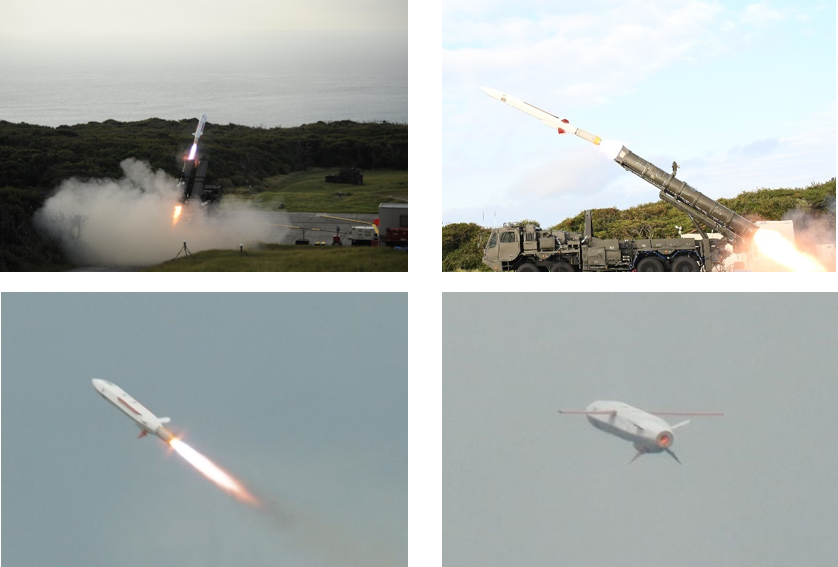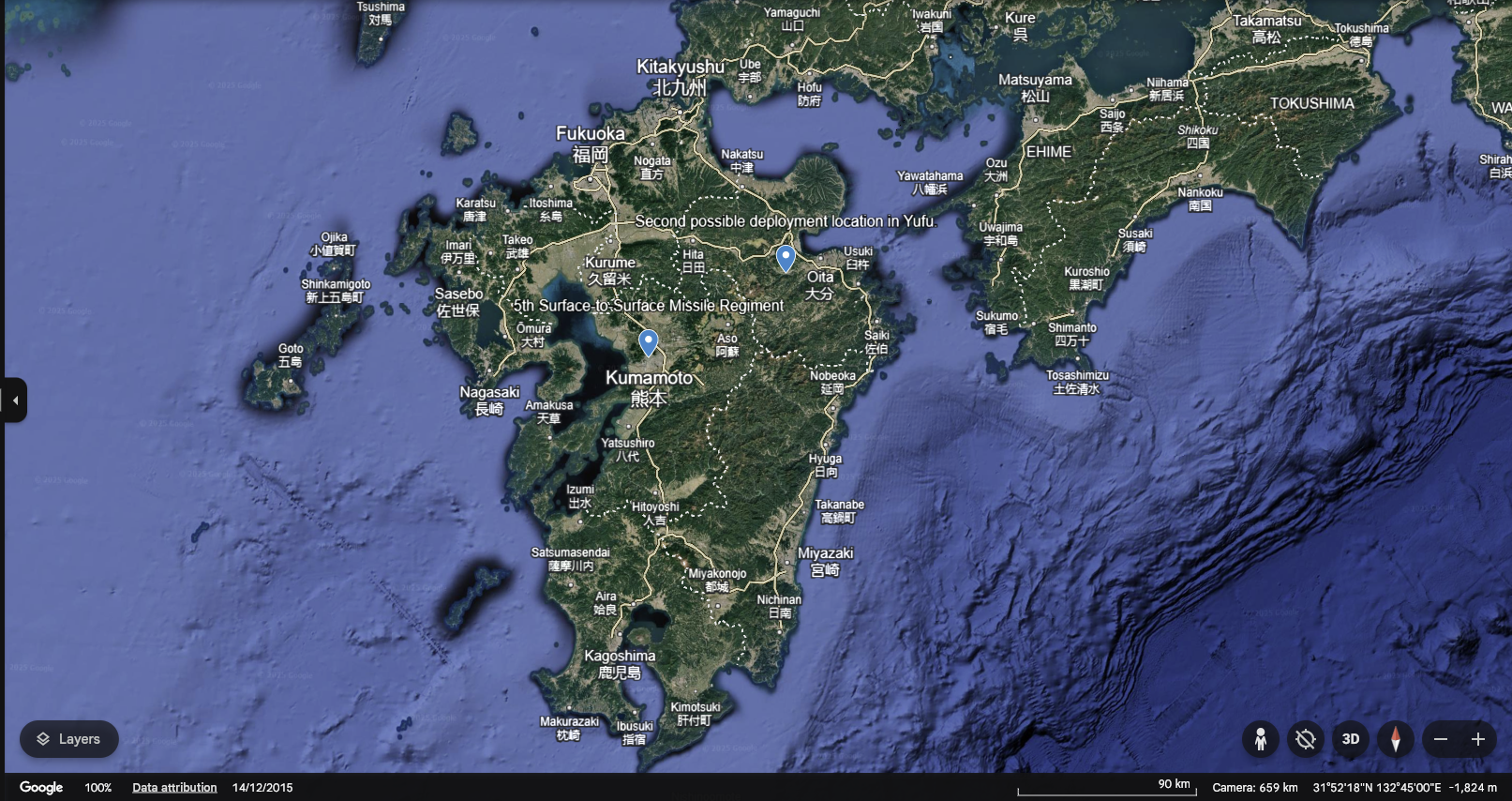Japan mulls Type-12 missile deployment to Kyushu as part of counter strike doctrine
The Japanese MoD is considering the deployment of Type-12 long-range missiles to the southern island of Kyushu as part of its counter strike doctrine, according to government sources cited by Kyodo News in a 16th March article.
The MoD is reported to be looking for potential deployment sites on the island, which is considered to be close enough to China, but not so close that it would heighten tensions. The prospective locations include the Ground-Self Defense Force’s (GSDF) anti-ship missile regiments in Yufu and the city of Kumamoto, according to the officials cited by Kyodo.
The GSDF has the 5th Surface-to-surface Missile Regiment stationed in Kumamoto, it is already equipped with the Type-12 missile system. There is a second Type-12 regiment in Okinawa, the 7th Surface-to-surface Missile Regiment, but Okinawa is considered too provocative for the new variant of the Type-12.
When Japan first deployed the Type-12 missiles in 2014, it initially considered stationing them on the Kyushu and Miyako islands. At that time, the Type-12 had a maximum range of 200 km and were designed solely for use in the anti-ship role. They had been deployed to the Miyako Islands as part of a GSDF exercise designed to simulate the country’s response to an invasion, and were not scheduled to be permanently stationed in Okinawa until 2016 or 17.
Even so, the Miyako Islands are around 500 km from China, and 300 km from Taiwan, prompting China to promise “firm and effective actions” in response. There does not appear to be any announcement from China’s Ministry of Foreign Affairs on this occasion.
Tech profile: Type-12

This image shows test launches of the Type-12 missile, it is just possible to discern the refined shape. Credit: Japanese MoD
The Type-12 is an anti-ship missile deployed by trucks, it started out with a range of 200 km which was expected to be doubled to 400 km under modernisation plans released in 2019. That range is to be further increased to 1,000 km under the latest modernisation plans announced in 2020 within the counter strike approach. At present, the 500 kg missiles have GPS and inertial navigation for mid-course guidance with a Ka-band radar seeker for the terminal phase. The modernised version has a revised shape, presumably to improve its stealth characteristics, and a command datalink allowing updated information on the target’s location to be passed to the missile during flight.
The 2024 MoD procurement plans included 18 billion Yen (approximately €111.6 million) for two sets of modernised ground-launched Type-12 missiles, another 17 billion Yen for ship-launched Type-12s, as well as plans to accelerate deployment of the improved type from 2026 to 2025. Five test launches were conducted between 2020 and 2024, according to the Japanese MoD.
Calibre comment
Japan is in the process of establishing a layered counter strike capability that will enable it to strike at Chinese ships and infrastructure in the event of an expected invasion. At the highest tier, this includes development of ‘Hyper Velocity Gliding Projectiles (HVGP),’ which the US recently approved a contract to support. The multi-layered approach is likely to include Tomahawk cruise missiles, 400 of which were procured in 2024, and the new development of the Type-12. .
The idea being that Japan can hold Chinese vessels and assets at risk from almost anywhere within its own territory. The Kumamoto deployment would potentially place the upgraded Type-12 missiles within 800 km of the Chinese coast, which is within the 1,000 km range reported to be the missile’s intended range. The HVGPs were expected to enter service from 2030, but China’s continued assertiveness in the Indo-Pacific has resulted in development and production occurring simultaneously.

Sign Up for Updates!
Get insider news, tips, and updates. No spam, just the good stuff!





